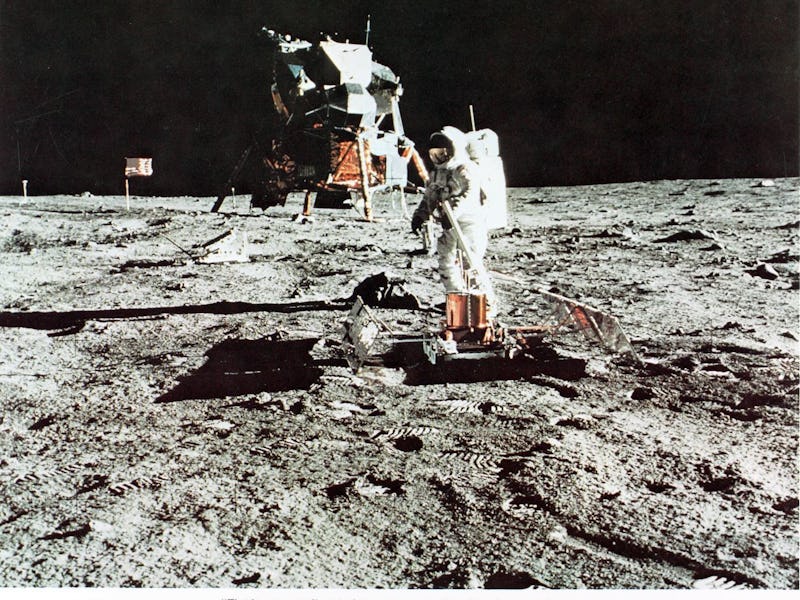Should the Apollo Landing Sites Be Protected Landmarks?
This nonprofit thinks so.

A bunch of Apollo-era space artifacts went up for auction Thursday, just in time for the 48th anniversary of Apollo 11 landing on the moon. The auction house Sotheby’s sold the items to the highest bidder, including a lunar sample return bag — still containing traces of dust from the moon — which fetched a hefty $1.8 million. But the entire spectacle was a reminder that there’s a contentious debate surrounding who is the rightful owner for many of these old relics from an important period in America’s — and the world’s — history.
Does Sotheby’s or any other party have a right to sell off these items to private citizens and make a profit, or should they be given up to a museum or NASA to put on display for the rest of the country to admire? There’s no easy answer to that question. And in fact, it’s simply an introduction into what will perhaps be a much more contentious issue as humanity begins to return to the moon and explore other worlds — what should be done with the old Apollo landing sites?
That’s why there’s a few people who’ve just launched a new nonprofit called For All Moonkind, Inc.. The group wants to gain international support for turning the six Apollo lunar landing sites into protected locations that future nations and parties who land on the moon cannot disturb. The organization plans to make their case publicly at the Starship Congress 2017 from August 7-9 in Monterey, California.
“We formed For All Moonkind with a mission to ensure the Apollo landing sites be recognized by the United Nations for their outstanding value to humanity and protected for posterity,” said cofounder and space lawyer Michelle Hanlon. “The decision by Nancy Lee Carlson and Sotheby’s to auction off an Apollo 11 Lunar Sample Return Decontamination Bag is a sobering wake-up call… The bag belongs in a museum, so the entire world can share in and celebrate the universal human achievement it represents.”
The group uses the United Nations model for deciding on UNESCO World Heritage sites, which considers cultural, historical, or scientific significance. The Apollo landing sites have all three of those.
It’s easy to see why there are concerns for what will happen to these sites. Certainly most of the world would be jazzed to see a permanent outpost on the surface of the moon. Several different parties, from Europe to China, have expressed explicit interest in building a lunar base. In addition, the world’s most powerful space power, the United States, would probably be keen on exerting its influence to preserve these sites as well.
With all that traffic potentially headed back to the moon in the near future, For All Moonkind figures the time is now to ensure humanity’s first historic trips there are left just as they were.